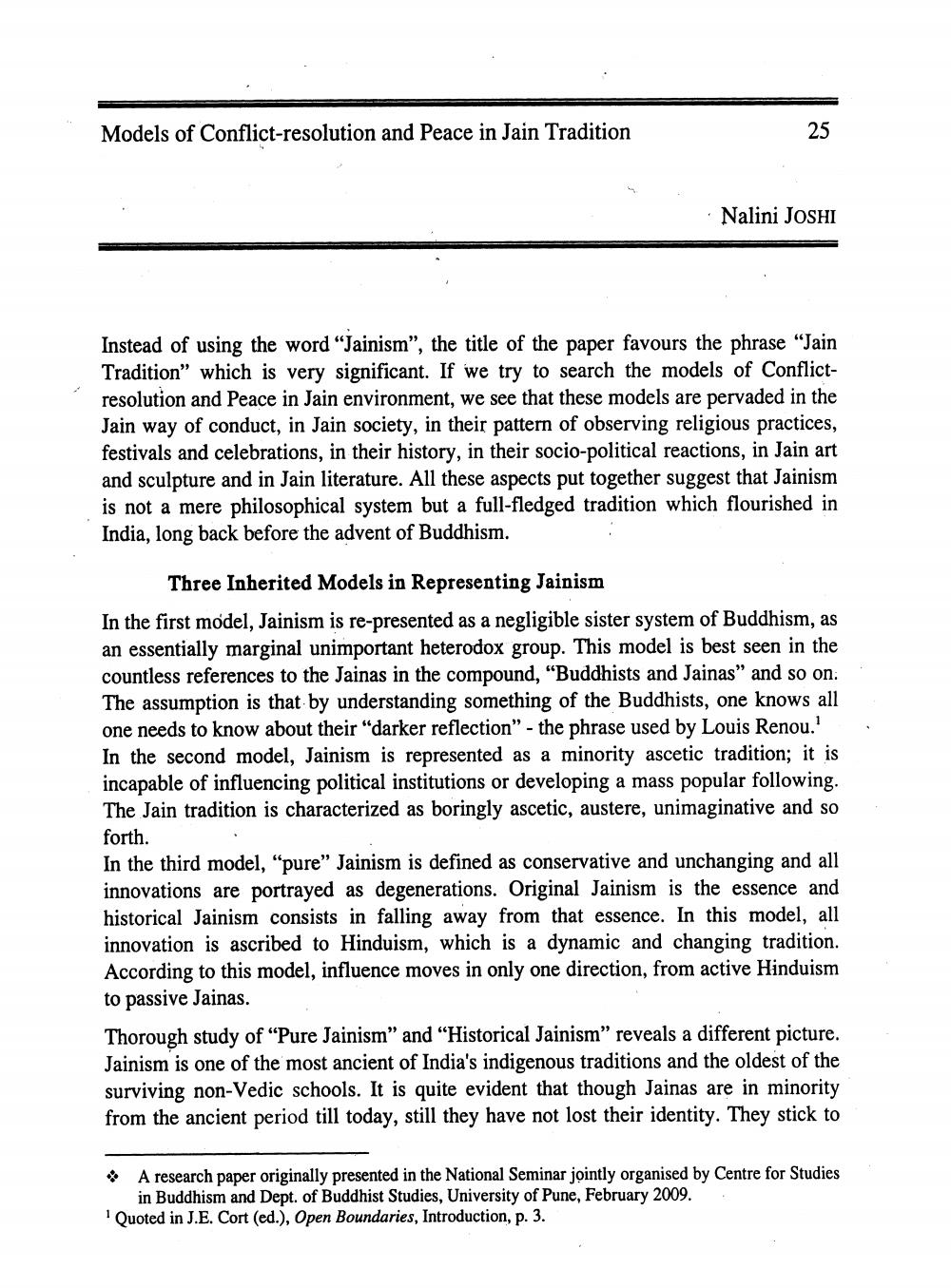________________
Models of Conflict-resolution and Peace in Jain Tradition
25
Nalini JOSHI
Instead of using the word “Jainism”, the title of the paper favours the phrase "Jain Tradition” which is very significant. If we try to search the models of Conflictresolution and Peace in Jain environment, we see that these models are pervaded in the Jain way of conduct, in Jain society, in their pattern of observing religious practices, festivals and celebrations, in their history, in their socio-political reactions, in Jain art and sculpture and in Jain literature. All these aspects put together suggest that Jainism is not a mere philosophical system but a full-fledged tradition which flourished in India, long back before the advent of Buddhism.
.
Three Inherited Models in Representing Jainism In the first model, Jainism is re-presented as a negligible sister system of Buddhism, as an essentially marginal unimportant heterodox group. This model is best seen in the countless references to the Jainas in the compound, "Buddhists and Jainas" and so on. The assumption is that by understanding something of the Buddhists, one knows all one needs to know about their "darker reflection" - the phrase used by Louis Renou. In the second model, Jainism is represented as a minority ascetic tradition; it is incapable of influencing political institutions or developing a mass popular following. The Jain tradition is characterized as boringly ascetic, austere, unimaginative and so forth. In the third model, "pure" Jainism is defined as conservative and unchanging and all innovations are portrayed as degenerations. Original Jainism is the essence and historical Jainism consists in falling away from that essence. In this model, all innovation is ascribed to Hinduism, which is a dynamic and changing tradition. According to this model, influence moves in only one direction, from active Hinduism to passive Jainas. Thorough study of “Pure Jainism” and “Historical Jainism” reveals a different picture. Jainism is one of the most ancient of India's indigenous traditions and the oldest of the surviving non-Vedic schools. It is quite evident that though Jainas are in minority from the ancient period till today, still they have not lost their identity. They stick to
A research paper originally presented in the National Seminar jointly organised by Centre for Studies
in Buddhism and Dept. of Buddhist Studies, University of Pune, February 2009. Quoted in J.E. Cort (ed.), Open Boundaries, Introduction, p. 3.




